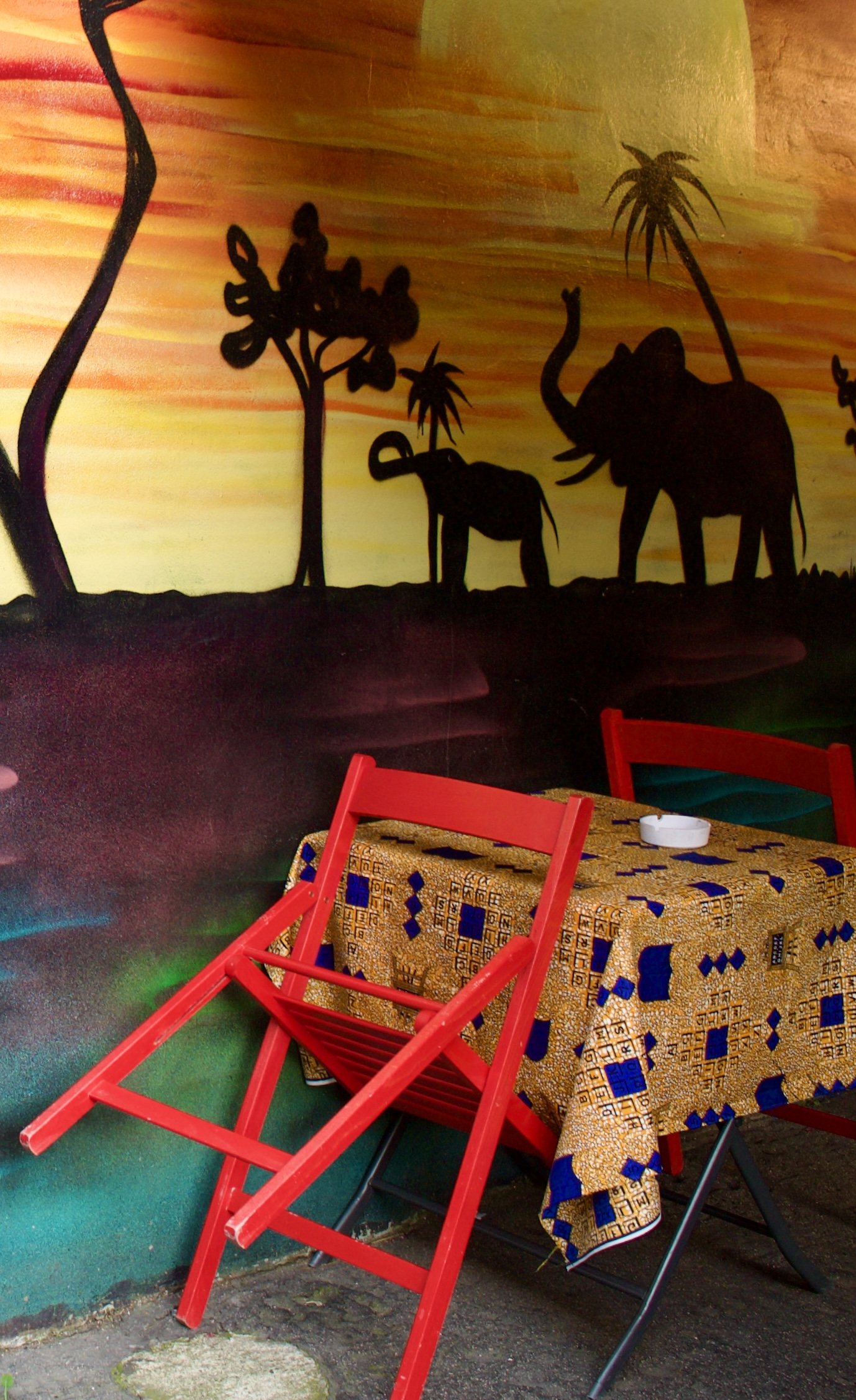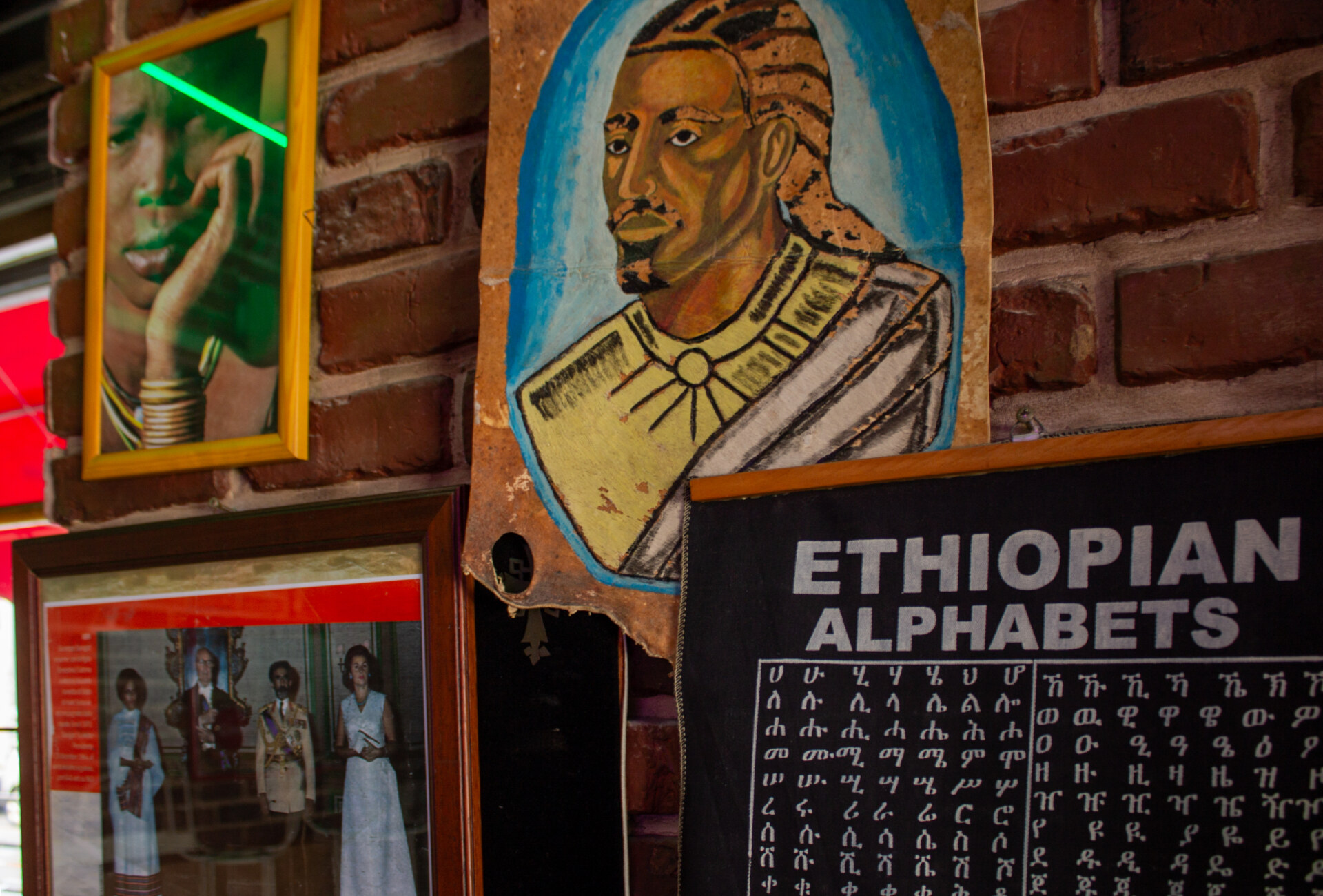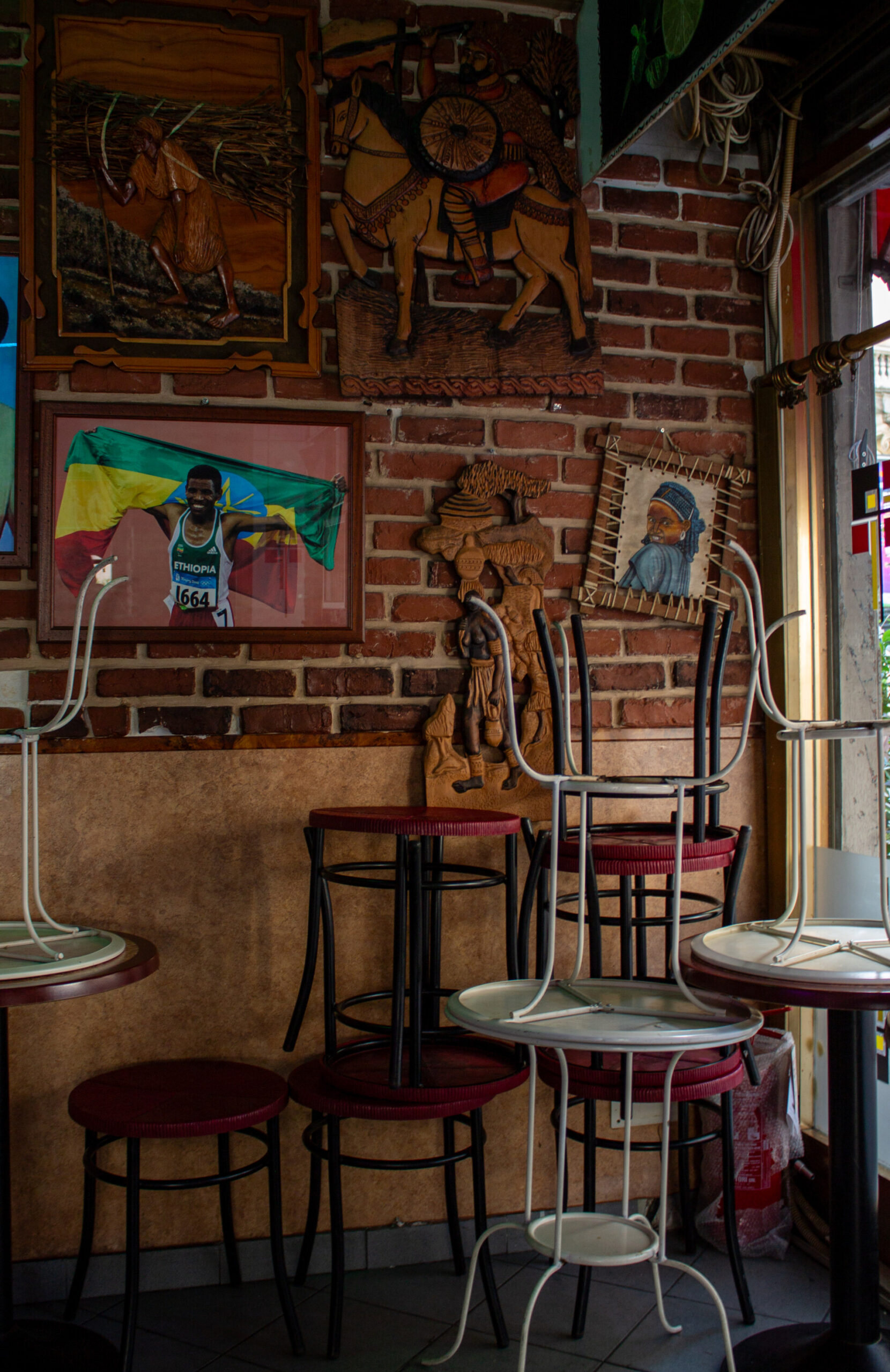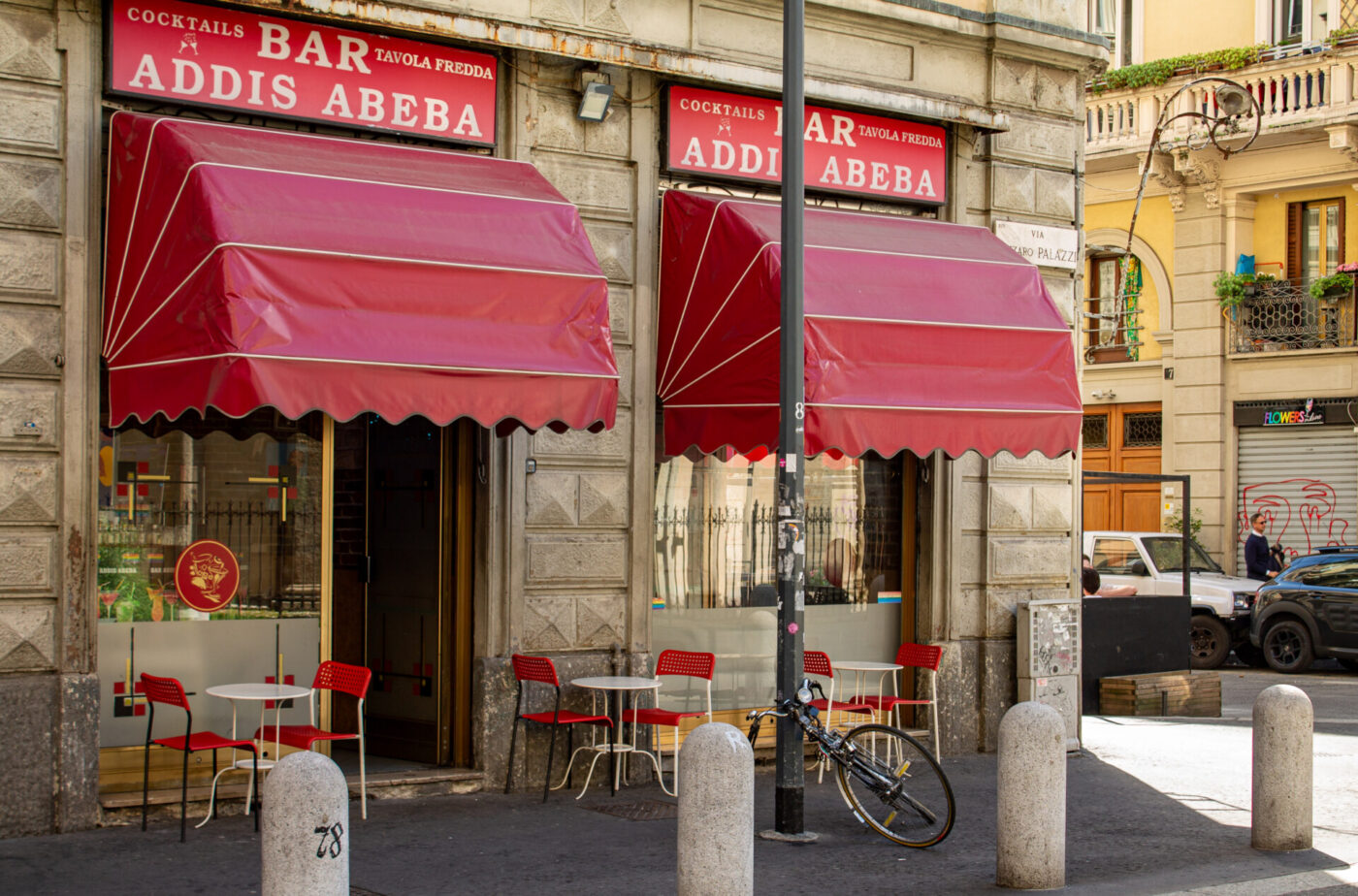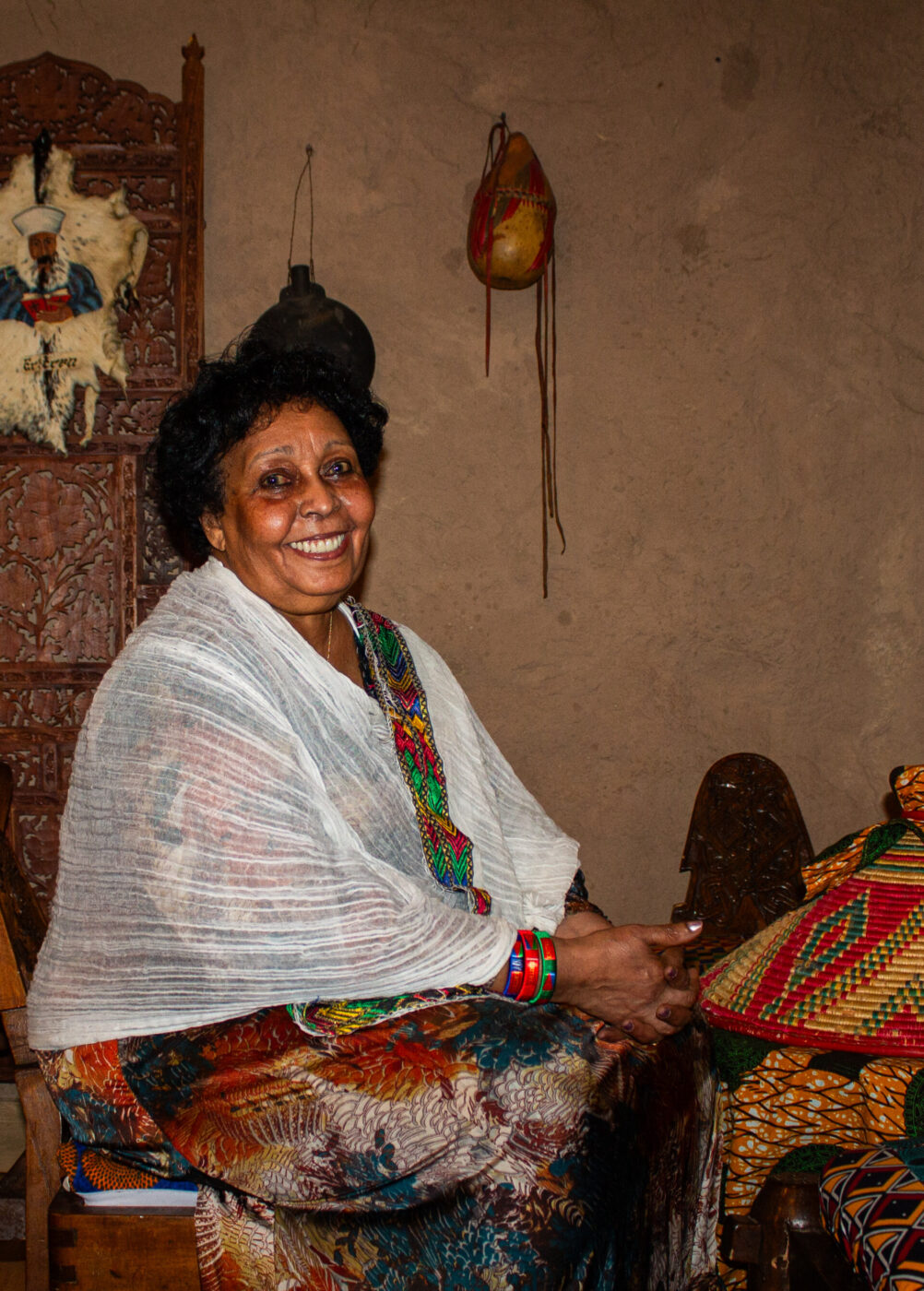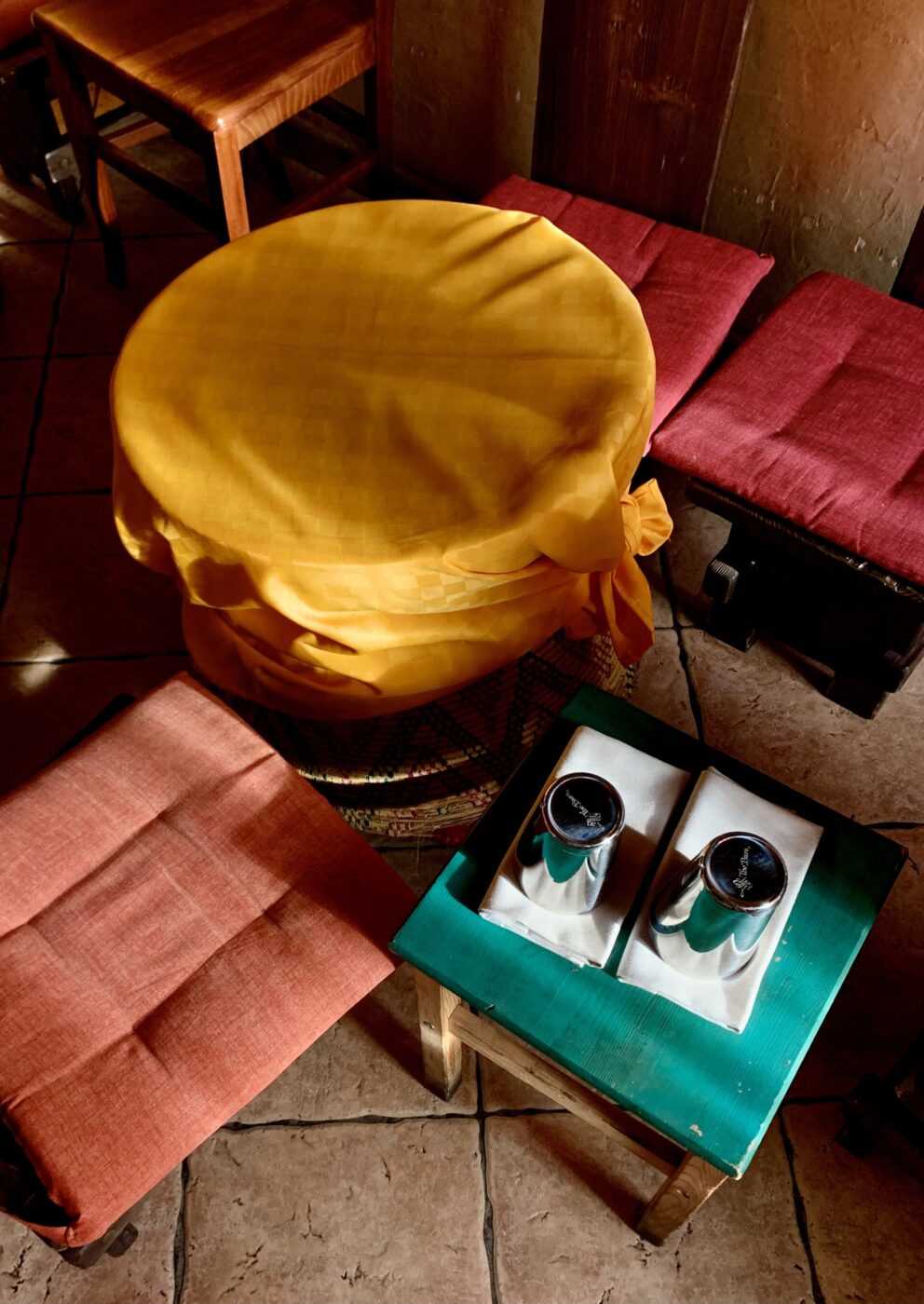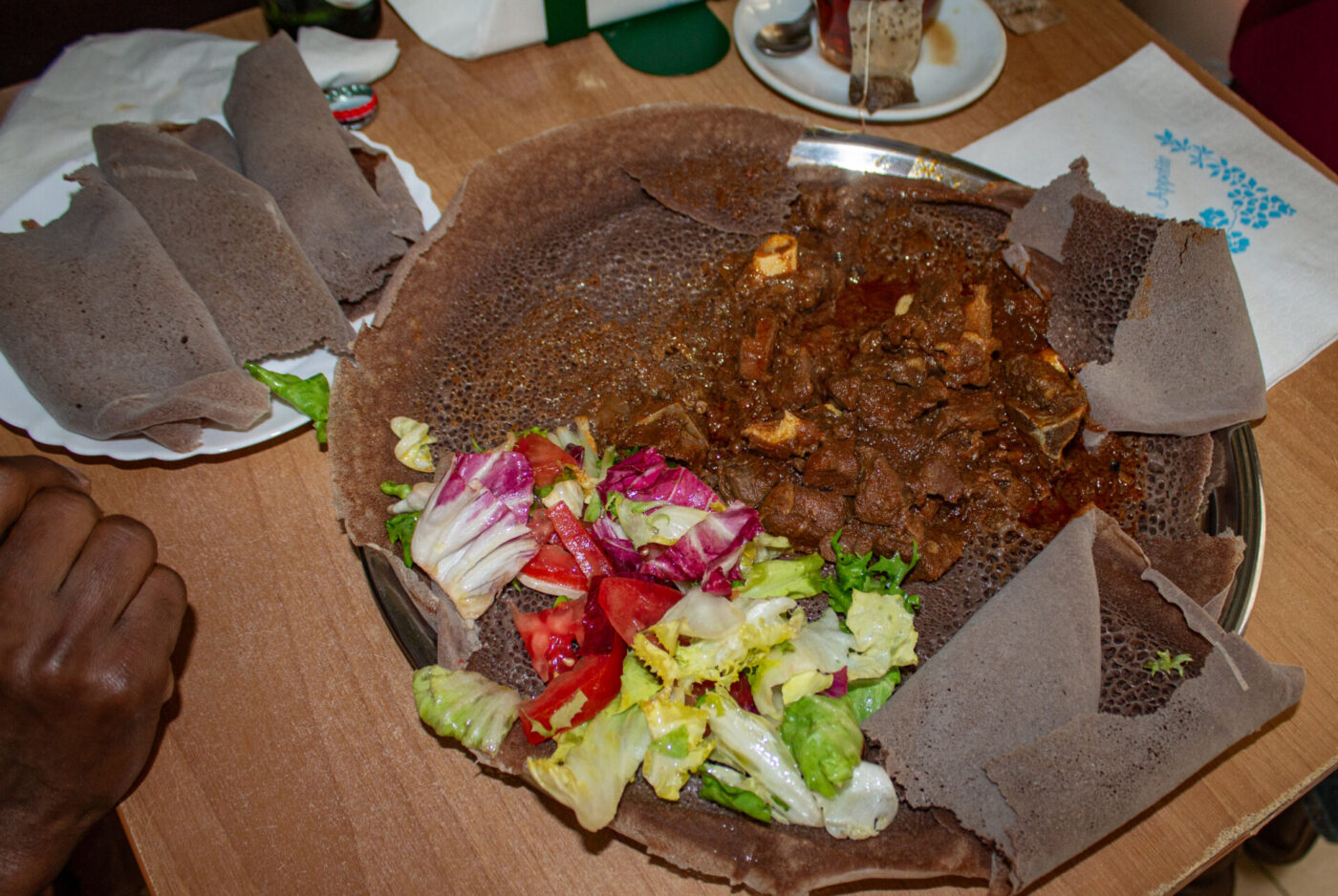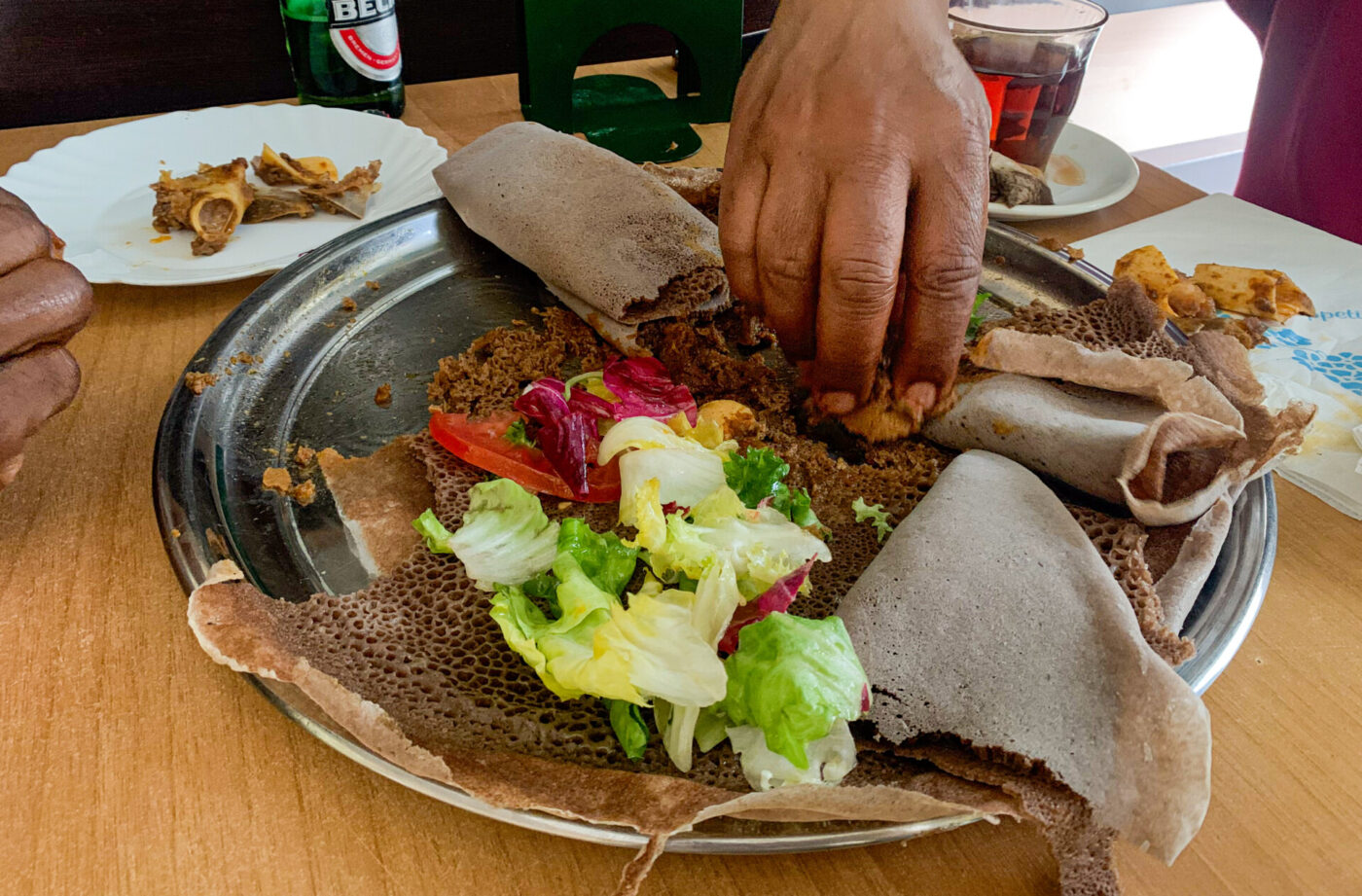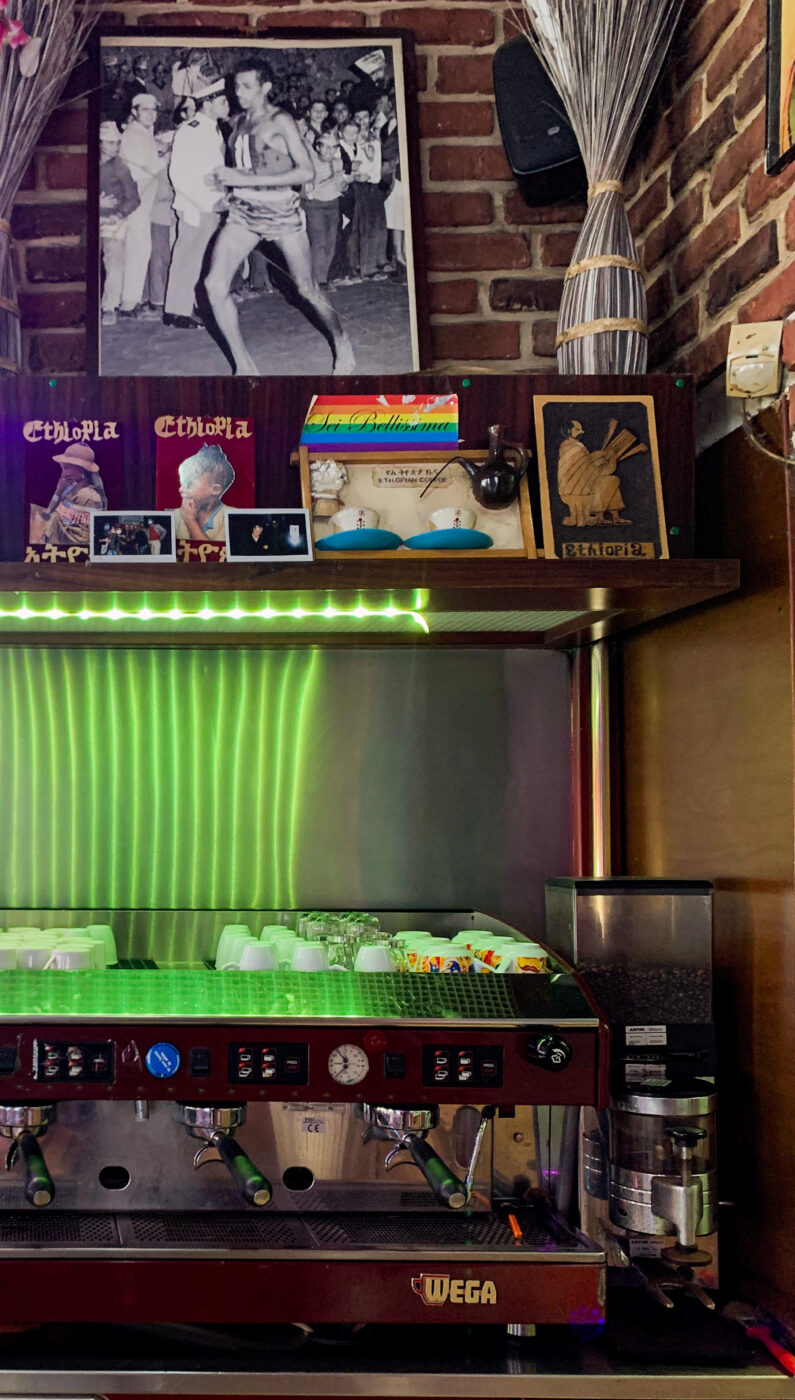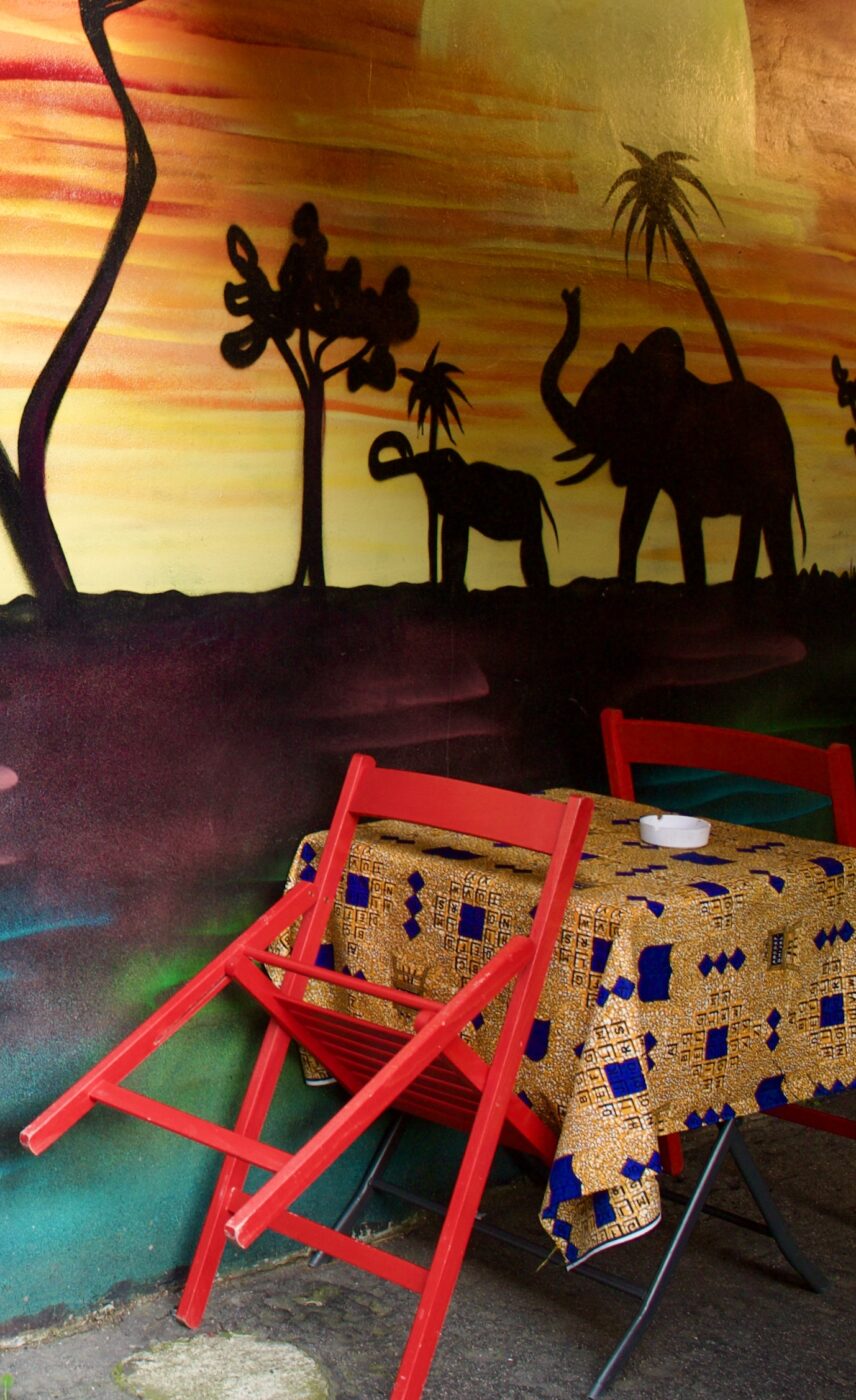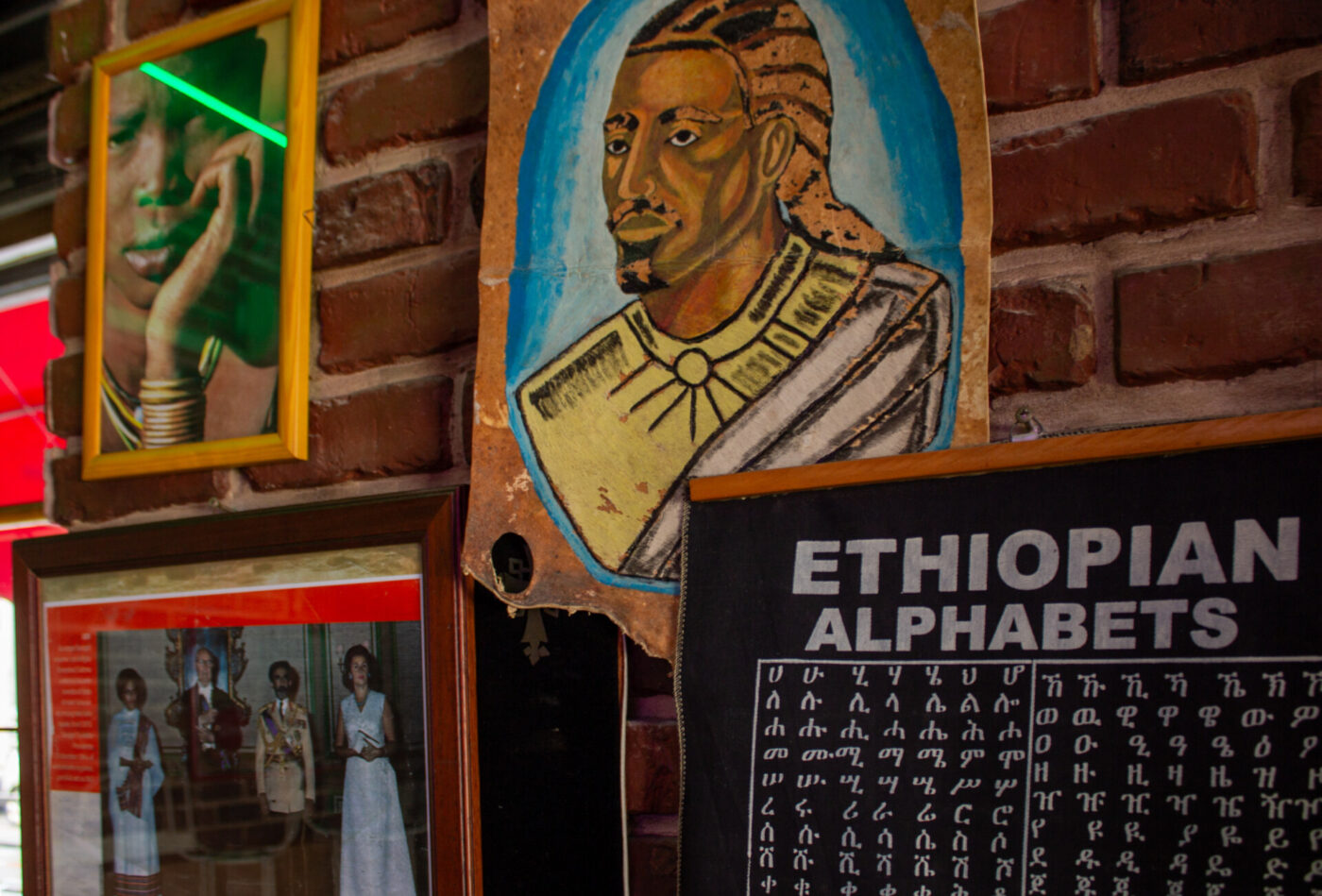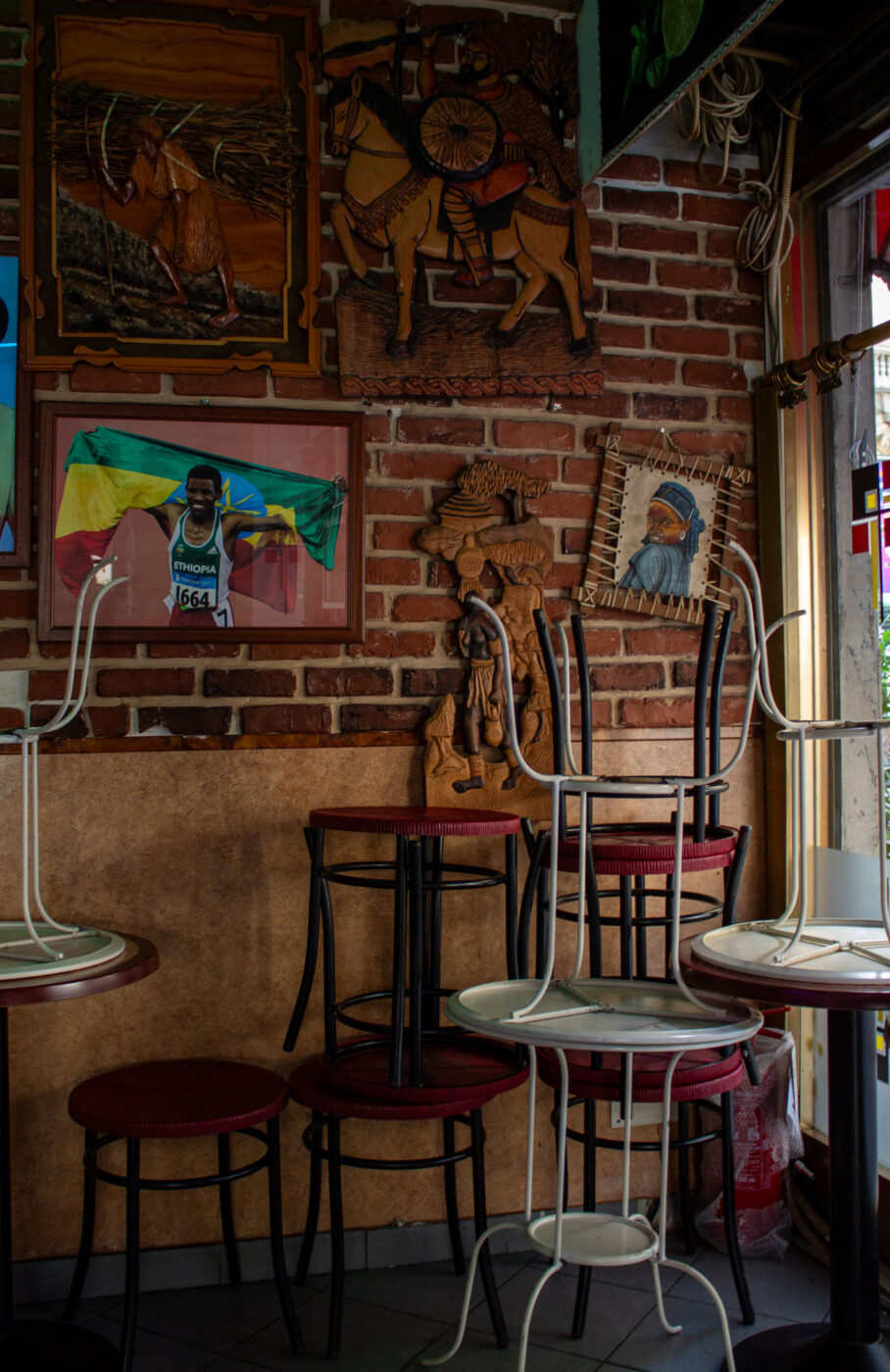It doesn’t take much to understand that here, in the maze of streets around Milan’s Porta Venezia, the people of the Horn of Africa have found a home away from home: spots serving zighinì, run by Abyssinians, mingle with pizzerias and bakeries. Locals, some wearing the zuria, frequent groceries where you can find the likes of berbere and a whole range of lentils. In this neighborhood on the eastern side of Milan, for at least half a century, the Abyssinian community has been deep-rooted in the city fabric–and recently, so has the queer community, with young Milanese flocking to its bars come aperitivo time. It’s for the former reason that Porta Venezia–where locals feast without cutlery and tribal music merges with the latest pop hits that invade the streets at night–is also called Asmarina, “little Asmara”, the capital of Eritrea.
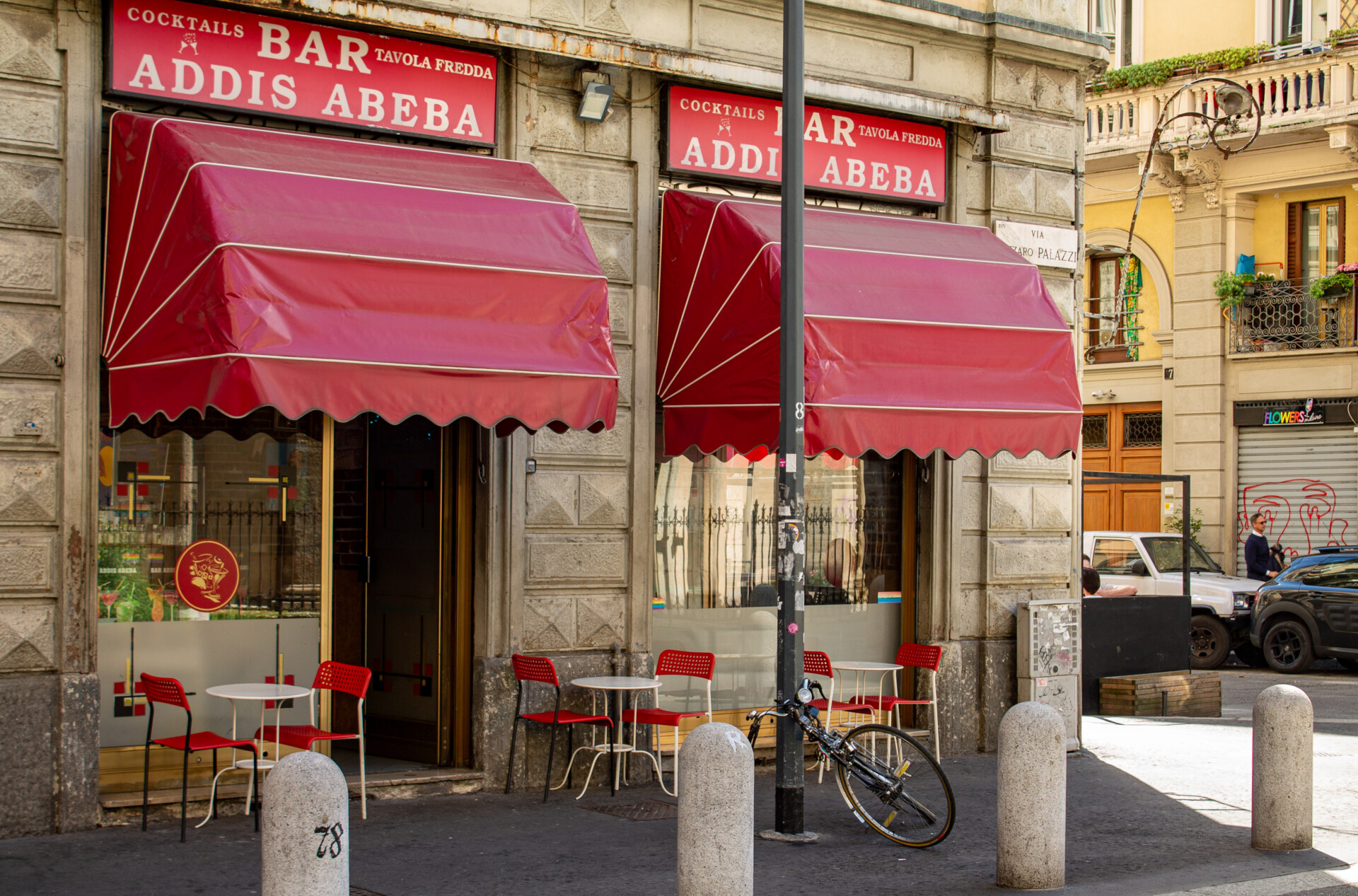
Addis Abeba
Italy’s Colonial Legacy and the Emergence of Milan’s Eritrean and Ethiopian Communities
A centuries-old bond unites Italy to the peoples of Eritrea and Ethiopia, where Italians are still called tilian, a distortion of Italian. One of the reasons for the high presence of Eritreans and, in smaller quantities, Ethiopians in Italy is certainly to be found in the shameful Italian colonial past, which lasted over seven decades and saw most of the war and expansionist efforts concentrated in the Horn of Africa. With the end of WWII, Italy was forced to abandon the conquered territories and the colonists to board the so-called “white ships” followed by war orphans, illegitimate children, and men and women seeking fortune overseas. Starting in the 1960s, while Eritrea was engaged in a bloody war to emancipate itself from the hegemony of the Ethiopian Empire, 7,000+ kilometers north in Milan, a well-organized community began to form around Porta Venezia, where over the years Eritreans and Ethiopians learned to live in harmony side by side. From this synergistic effort, the first schools of Italian and Tigrinya language–the most widespread in Eritrea and northern Ethiopia–and local community centers were born.
In 2015, Asmarina. Voices and Images of a Postcolonial Heritage, a documentary dedicated to the Abyssinian diaspora in Milan, was released after long and in-depth research carried out by filmmakers Alan Maglio and Medhin Paolos. The title was suggested by Michele Lattenze, a prominent figure in Milan’s Eritrean community and an advocate for its historical memory, born in Asmara to an Italian father–who had another family in Puglia and never officially recognized him–and an Eritrean mother. His inspiration came from “Asmarina”, an Italian song composed in the 1950s by Pippo Maugeri, which became very popular among Eritreans thanks to the singer Wedi Shawl. Shawl translated the song into Tigrinya and re-semanticized it as a hymn to the city of Asmara, not yet liberated.
The documentary reveals a latent torment that unites old and new generations, but manifests itself through different emotional turmoils: on the one hand, the reticence to talk about the Italian colonial era in Africa, on the other, the desire to learn about one’s roots. This generation gap separates those who left the Horn of Africa as adults (and who never miss an opportunity to revive their feeling of belonging to their native land), and those who were born and raised in Italy, as Asli Haddad, born in Italy to Eritrean parents, claims in Asmarina: “If there is one thing that Italy, Eritrea, and Ethiopia have in common, it is the desire not to talk about the past.” Yet in the 1970s and 80s, in the month of August, Eritreans from all over Europe gathered in Bologna for a month of rallies and demonstrations in support of the war of independence from Ethiopia. And now that war and colonialism are memories of the past, the celebratory spirit of the complex Eritrean diasporic identity lives through joyful events that celebrate Eritrean culture and traditions. In 2023–30 years after independence–the Eritrea Festival was held in Milan, and saw the active participation of thousands of Eritreans belonging to all the nine ethnic groups from the six geographic regions.
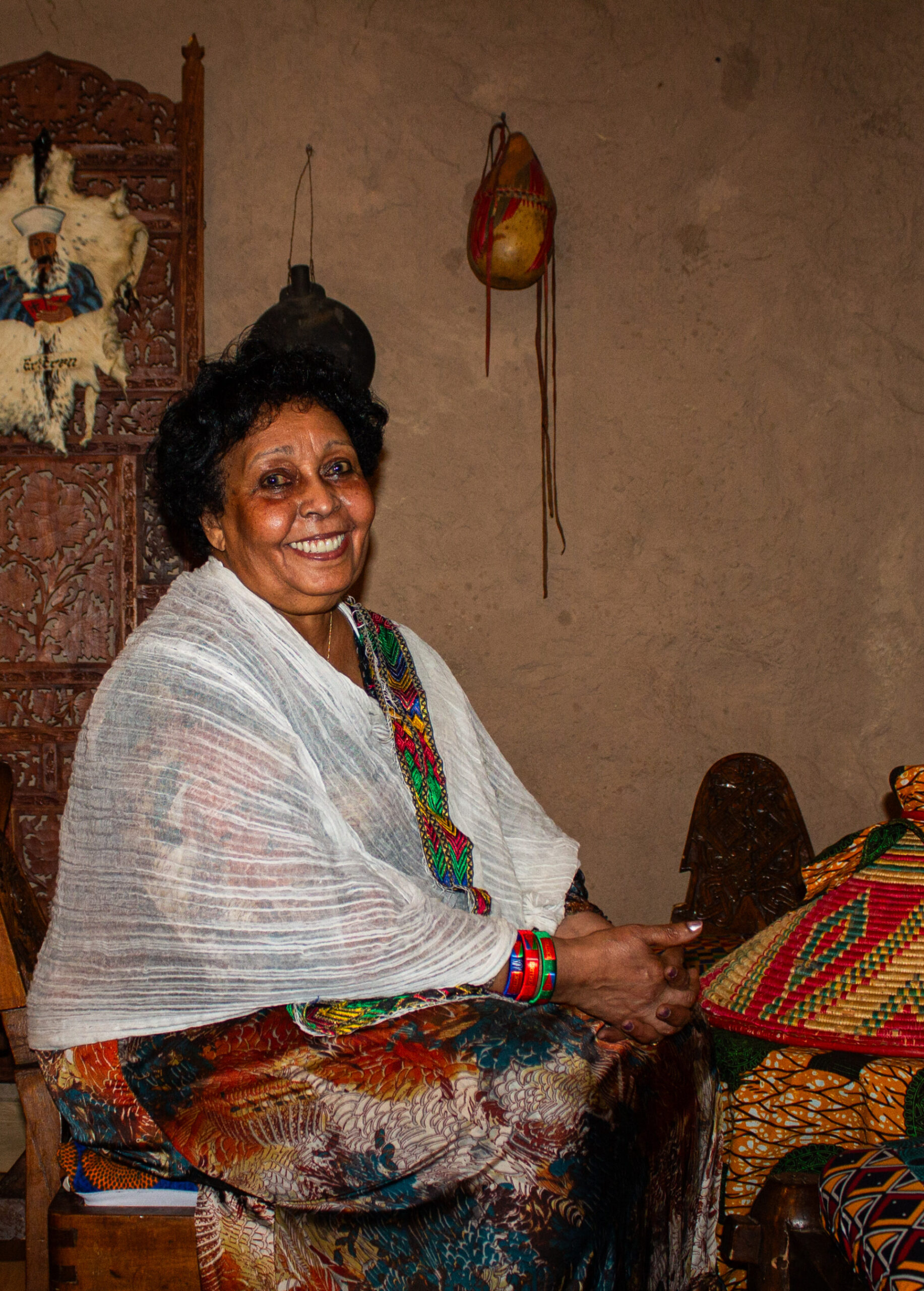
Kebedesh in her restaurant Warsà
Culinary Connections and the Flavors of Warsà (Heritage)
What acts as a junction point for all in these fractures is food: zighinì, sambusa (crispy, triangular pockets of flaky dough filled with spiced meat, legumes, or vegetables), injera (a fermented crêpe-shaped pancake made from teff flour, a cereal grown on the Ethiopian highlands), and Asmara beer, which owes its name to the Eritrean capital where its historic brewery is located.
My expert guide through the flavors and preparations of Eritrean cuisine is Kebedesh, a kind and smiling woman who welcomes me in a traditional white dress, the zuria, before we sit at a table in her restaurant Warsà. “I moved to Milan in 1980, and 11 years later I opened Warsà, which in our language means ‘heritage’. Here you can find all the typical dishes prepared according to tradition, as I was taught by my mother and my grandmother.” The most popular dish is zighinì, a long-cooked meat or chicken stew–a vegetarian version is also available–served on injera and accompanied by mixed vegetables and legumes like lentils. It’s enjoyed strictly without cutlery, using shreds of injera to grasp the stews and salads. The aromatic scent comes from berbere, the true protagonist of Eritrean cuisine; a spice blend traditionally composed of chili pepper, ginger, clove, coriander, common rue, ajowan, and, sometimes, a pinch of long pepper.
Kebedesh tells me that she now lives between Asmara and Milan, where her daughter Aster carries on the family business. While she shows me the venue, pervaded by a convivial and lively atmosphere, among colorful tablecloths, original furnishings, and references to Eritrean culture and history, her eyes linger on an old photo of her niece– who is now 16–wearing a zuria. It’s certainly a family affair, as Aster’s brother Biniamin, who also took his first steps in Warsà’s kitchen, runs his own Eritrean restaurant. He succeeded in bringing African cuisine out of the stronghold of Porta Venezia–which, until not long ago, the Milanese called “the African neighborhood”–and opened Savana (Italian for “savannah”) a stone’s throw from the famous multi-ethnic neighborhood of Via Paolo Sarpi, the so-called Chinatown. “It’s true, in Eritrea we don’t have the savannah,” confesses Biniamin, “but my desire was to represent all of Africa.” And thus, on the menu, alongside the inevitable meat, chicken, or fish zighinì, you can find couscous, Egyptian desserts, and wines from South Africa. Meals are accompanied by music from all over the continent, while the walls and ceilings are covered with decorations inspired by Eritrean culture, created by Simon Haile, an Eritrean artist currently living in Germany.
Although Biniamin has no memory of his life in Eritrea, which he left when he was only three, his bond with the African continent is still deeply rooted in him. It shines through his words full of melancholic tenderness, which, in Italy, is known as mal d’Africa (a mix of nostalgia and blurry emotions that people usually feel after returning from a trip to Africa). A condition a large part of the varied clientele–many Italians and foreigners, but also first, second, or third generation members of the Abyssinian community–that frequent the Eritrean restaurants of Porta Venezia, and beyond, seems to have in common.
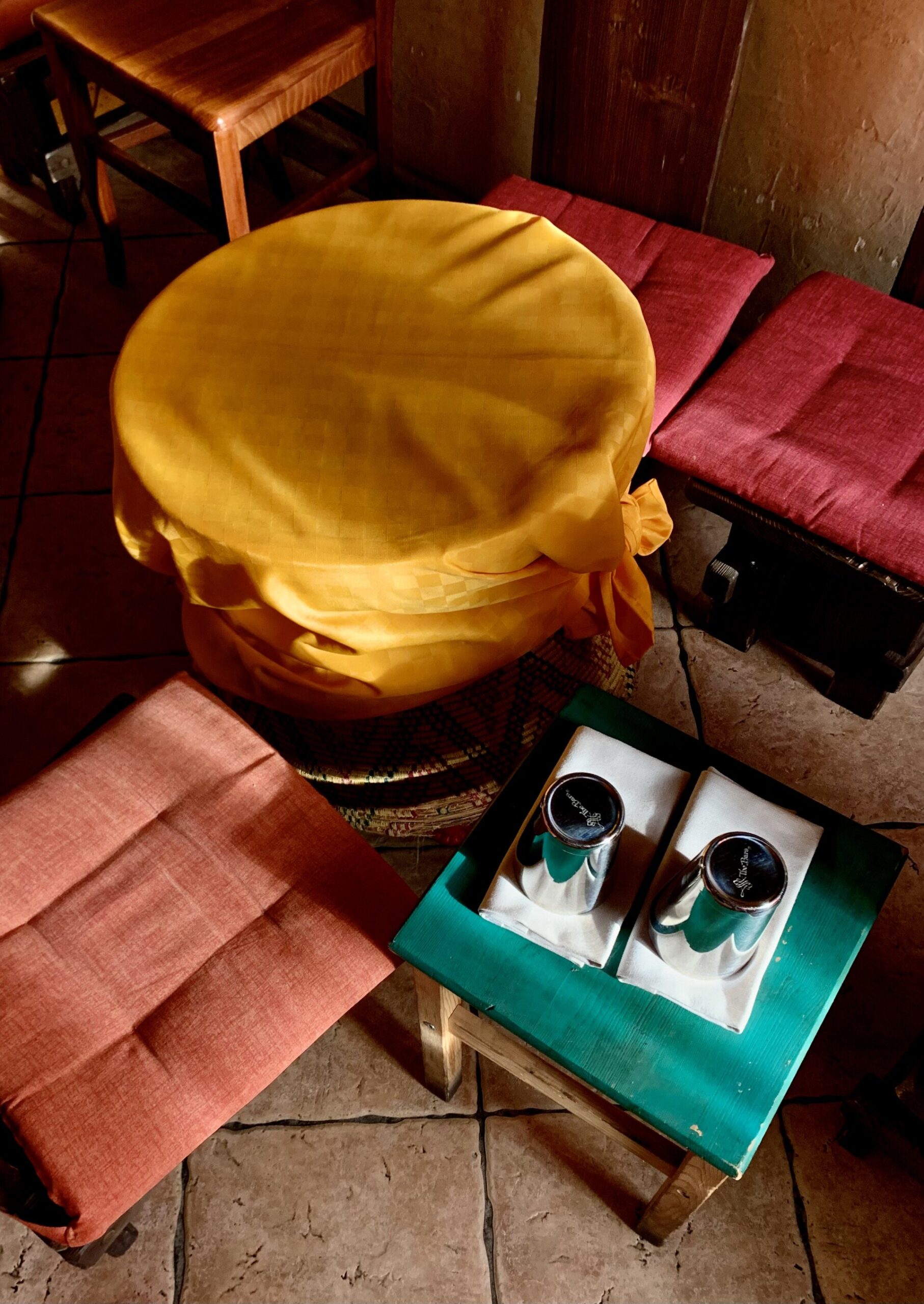
Savana
Shared Plates and Stories: The Culture of Community in Porta Venezia
Wandering around a semi-deserted Porta Venezia in the afternoon, very different from the crowded streets during after-dinner drinks, I come across a young woman wearing a colorful headwrap, standing at the entrance of a small restaurant. On the door is a poster in Tigrinya promoting a language course. The place is closed to the public, the lights are off, but it’s clear that she’s waiting for someone. I stop to talk and find out that she has been living in Italy for about ten years and opened her restaurant Mosobna in 2018. After a few minutes, we are joined by Ghirmai, a sales agent who has lived in Milan with his family for 50 years, and 29-year-old Semere, whose rudimentary Italian has not prevented him from finding a job as a railway worker.
They encourage me to follow them inside and although it is already 4 PM, they order a large zighinì and generously invite me to join in their super-late lunch. The gesture of eating from the same plate is the concrete manifestation of a culture of sharing that is sadly obsolete in the European and Western world and makes me feel truly close and welcomed by my fellow diners, even though we’ve only met a few minutes before. Between mouthfuls, they tell me about their work, their families, their lives as Eritreans in the diaspora, their integration into the socio-cultural fabric of Italy. Unlike many of his peers, Ghirmai shows no reluctance to talk about the intricate relationship that binds our countries: “Did you know that, during colonialism, the Italian army employed many young Eritrean men, sent to fight in Libya and Somalia?” (The so-called “indigenous troops” were a military tool suitable for a war of movement fought in the desert; the many lives lost during these colonial wars are a historical debt that Italy still bears.)
Both Ghirmai and Semere never miss an opportunity to celebrate their origins and traditions, says Ghirmai while proudly showing me photos of his daughters and wife wearing the zuria. The unmissable weekly event for the members of the Eritrean community takes place on Saturday evenings at the Eritrean community center on Via Temperanza, next to the consulate. Here men, women, and children play music, dance, and share meals based on zighinì and other typical recipes. The center is also the community’s meeting place on religious or secular anniversaries, such as Independence Day, celebrated on May 24th and commemorating the liberation from Ethiopian oppression in 1991, or the Eritrean Martyrs’ Day, which falls on June 20th. In the days preceding and following these anniversaries, the Eritrean flags hung on shop signs or displayed in shop windows color the streets of Porta Venezia. The central red triangle–representing the blood shed by Eritrean people–progressively narrows to symbolize the end of struggle and the beginning of prosperity, leaving space for green, indicative of progressive growth in agriculture and food security, and blue, which suggests the growing trade in the Red Sea and the protection of the marine ecosystem. Finally, at the center is a golden branch, epitome of peace and unity, that stands for the interweaving of ethnicities and languages that make up the Eritrean people.
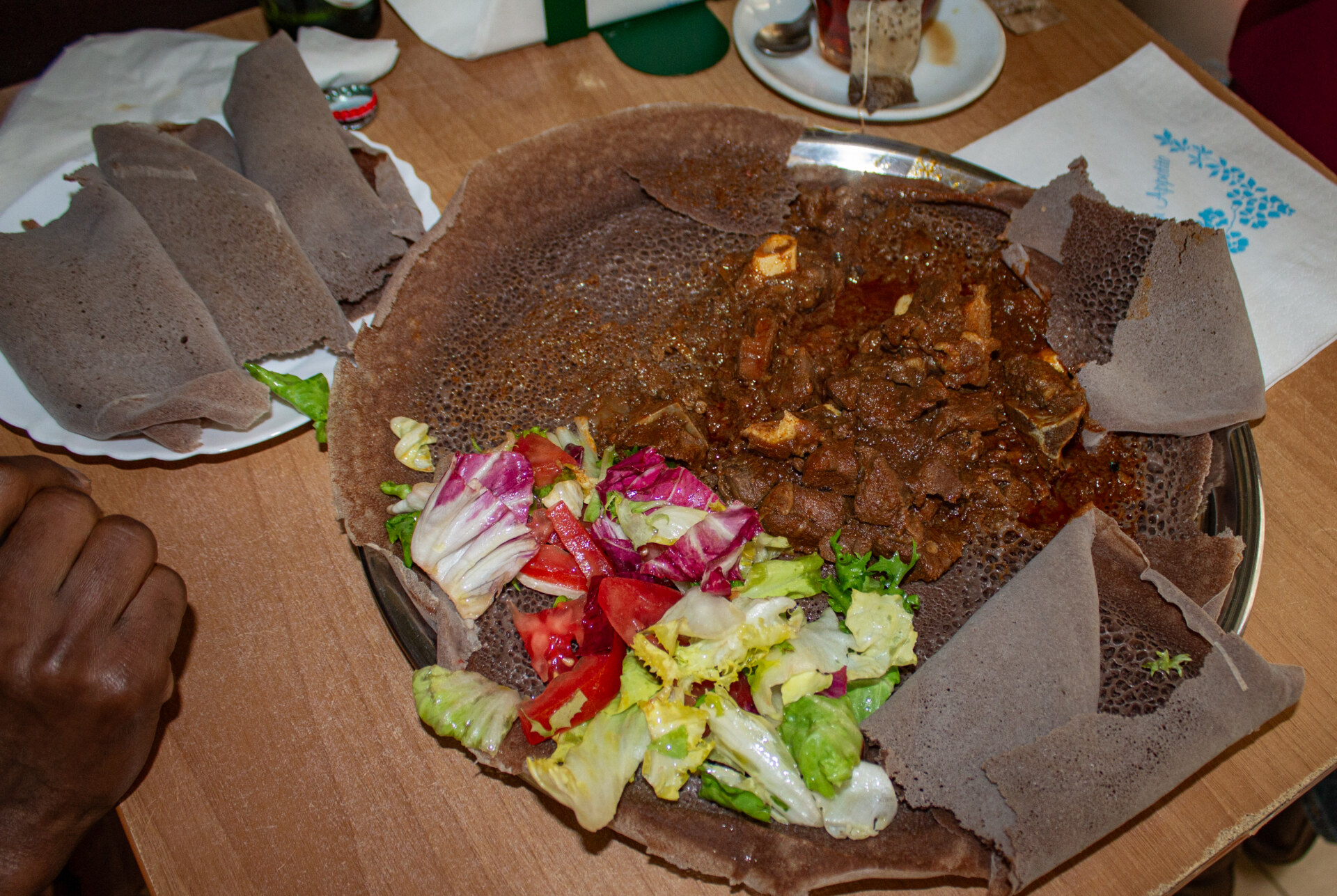
Zighinì, a long-cooked meat or chicken stew, atop injera
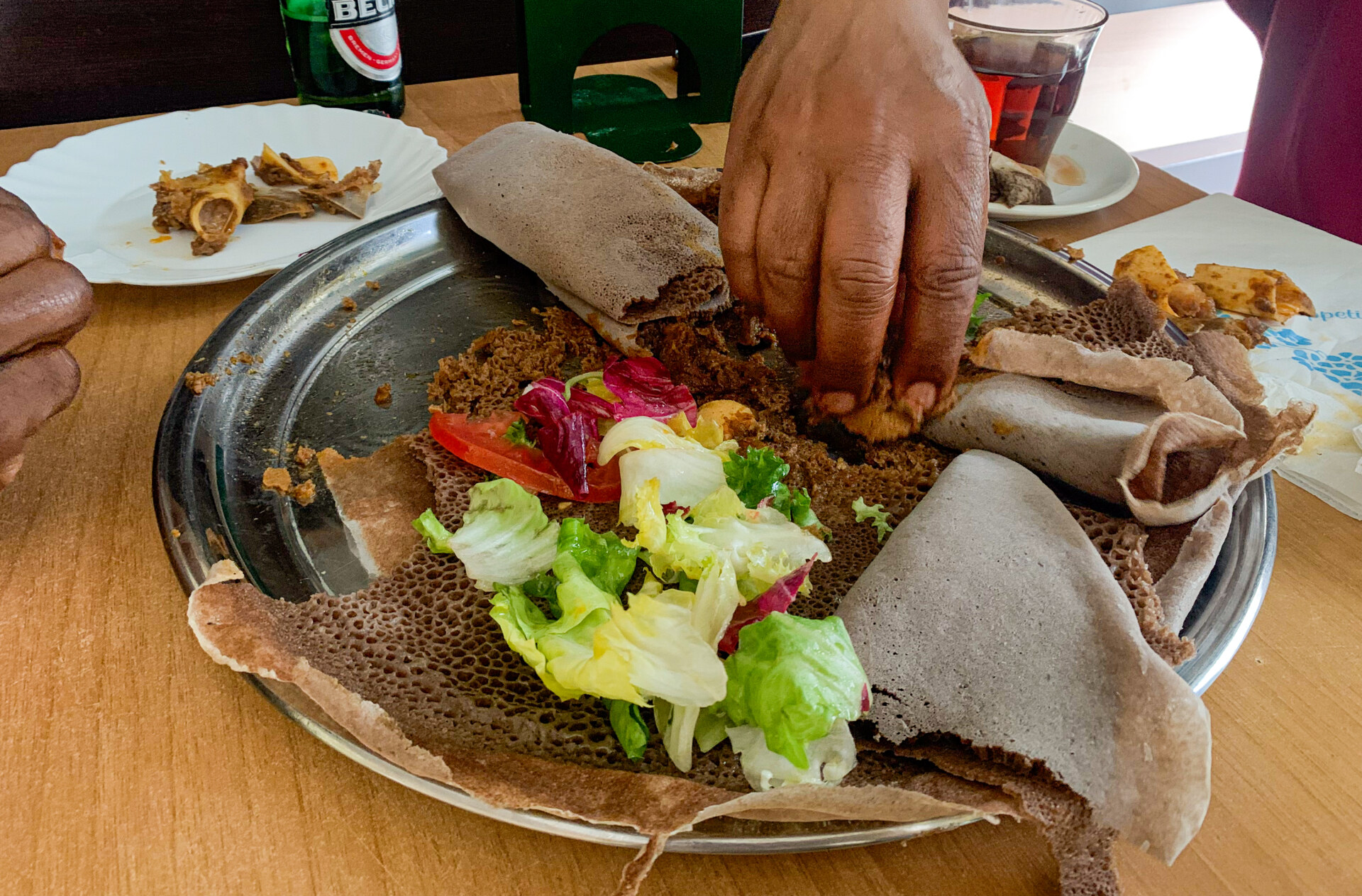
Everyone eats zighinì from the communal plate
Nightlife and Rainbow Streets: The Evolution of Asmarina
If there is one thing that everyone agrees on, regardless of origin, job, or age, it is the metamorphosis that the Porta Venezia neighborhood is undergoing. “Porta Venezia wasn’t like this when I opened my restaurant; over the years it has improved a lot and has come alive,” claims Kebedesh. On the other hand, Razane, who has been living in Italy for over 20 years and has owned a small telephone and electronics shop for 10 years, complains about the lack of work due to the generational shift in Asmarina’s population.
Unlike a few years ago, today the neighborhood is at its liveliest from 6:30 PM onwards, when young people start gathering outside bars for aperitivo. Small shops and grocery stores have therefore been replaced by restaurants, fast-food stops, bars, and pubs, many of which have become iconic go-to places for Milan’s queer community, which in these streets has found its safe haven–the rainbow platform of the Porta Venezia metro station is one of the most photographed and Instagrammed spots in Milan.
Among these are the LOVE bar, run by an all-female Ethiopian family, or Red Cafè, where the vivacious Eritrean owner Zaidne, aka Za, does the honors. Nonetheless, here and there you can still find small minimarkets selling products from Africa and Asia, hairdressers specializing in African braids, and shops like Razane’s, that, during the day, act as real meeting points for members of the Abyssinian community. On Via Lecco, Milan’s “rainbow street”, there is Addis Abeba, which owes its name to the capital of Ethiopia, where Anna, who took over the business about 20 years ago, is from. Addis Abeba soon became a meeting place for her compatriots and Eritrean neighbors who, little by little, gave way to the current young, nighttime clientele. Behind the colorful counter, Anna prepares good, cheap cocktails–a rarity in Milan–and cooks injera. Between rainbow flags, pride month posters, African decorations, and photographs of Ethiopian athletes and musicians, at Addis Abeba one can experience this lively mix that testifies to the generational change of pace of Asmarina, which has become, in many respects, the neighborhood of inclusiveness.
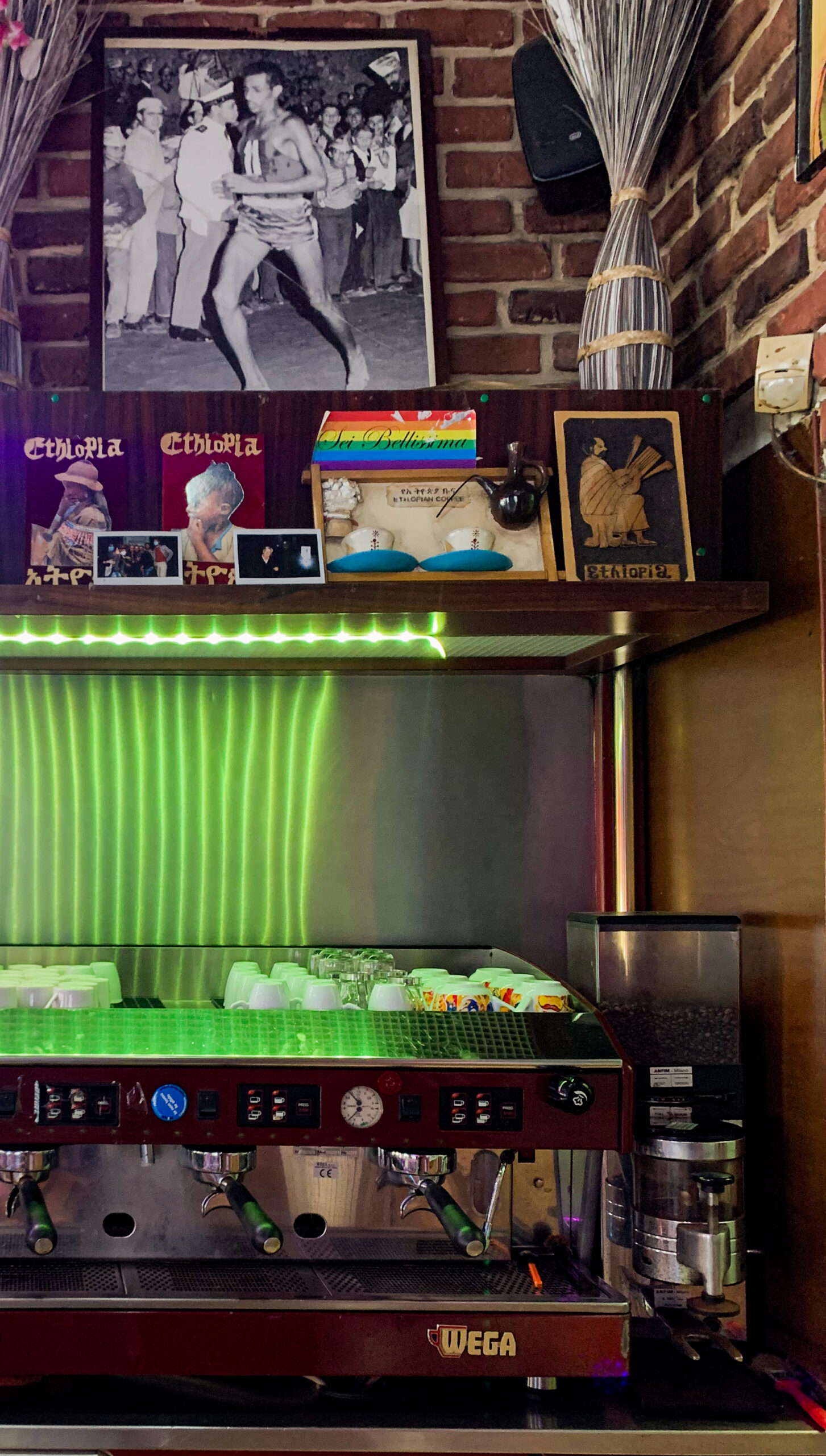
The bar at Addis Abeba
